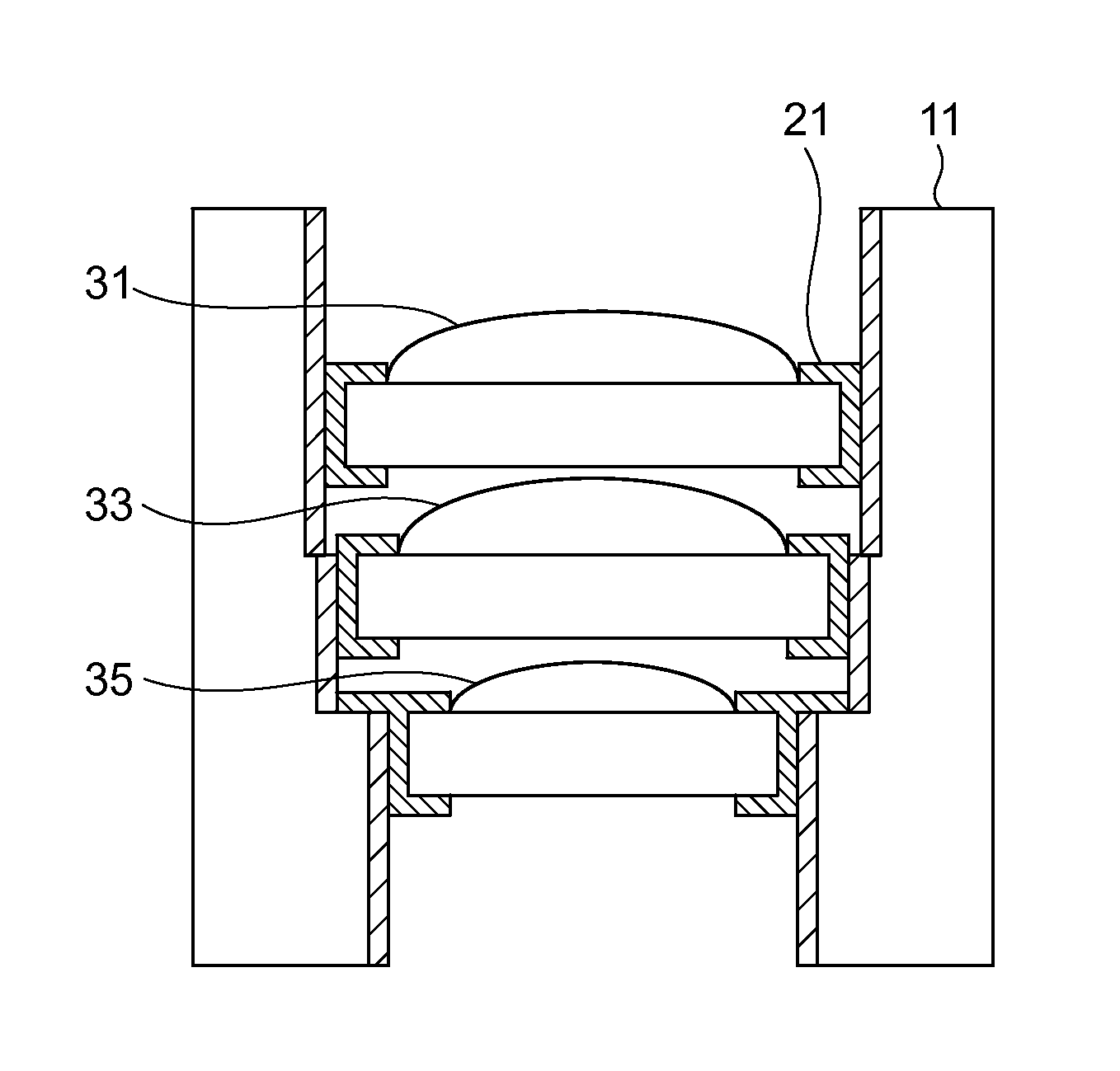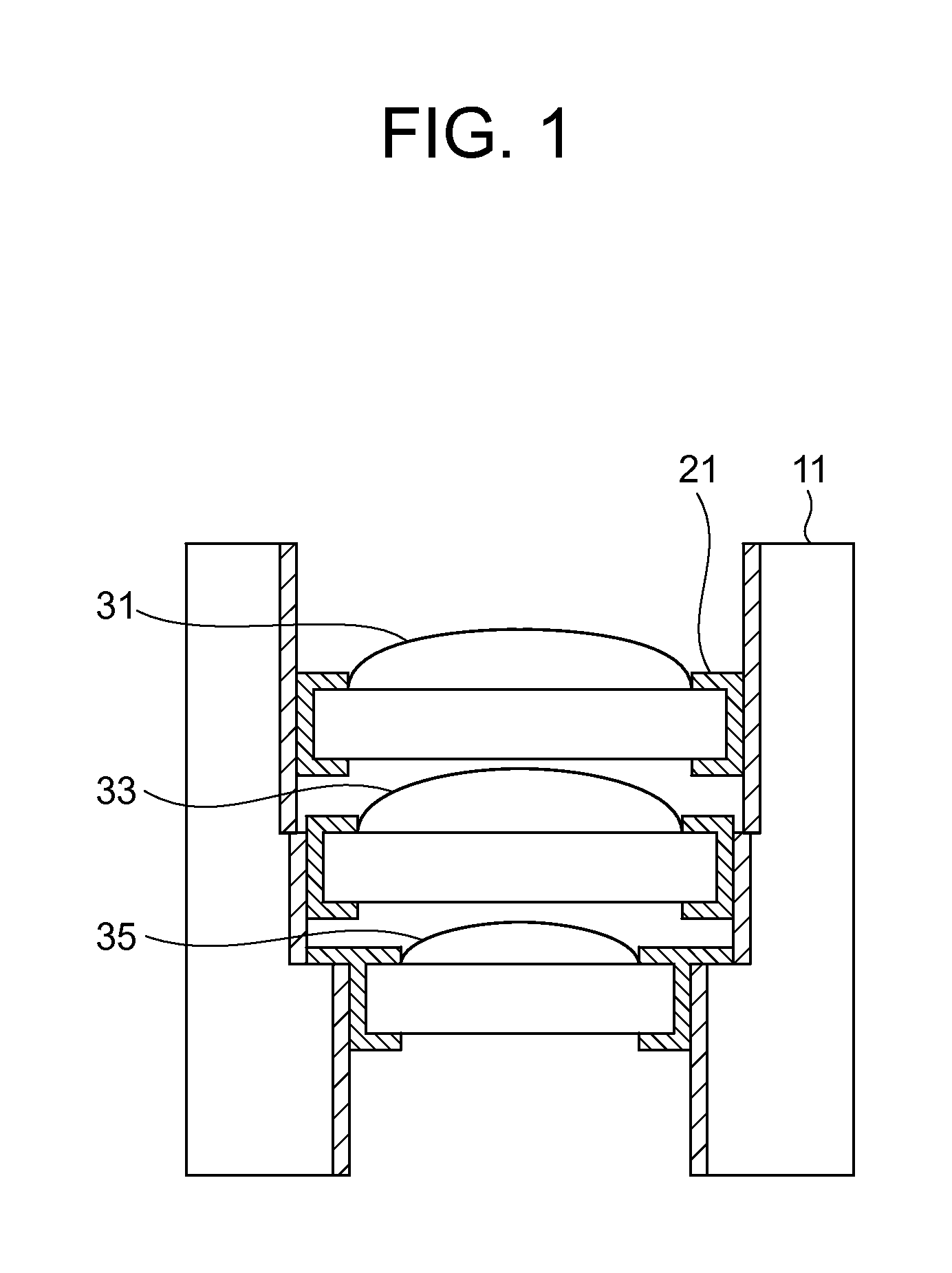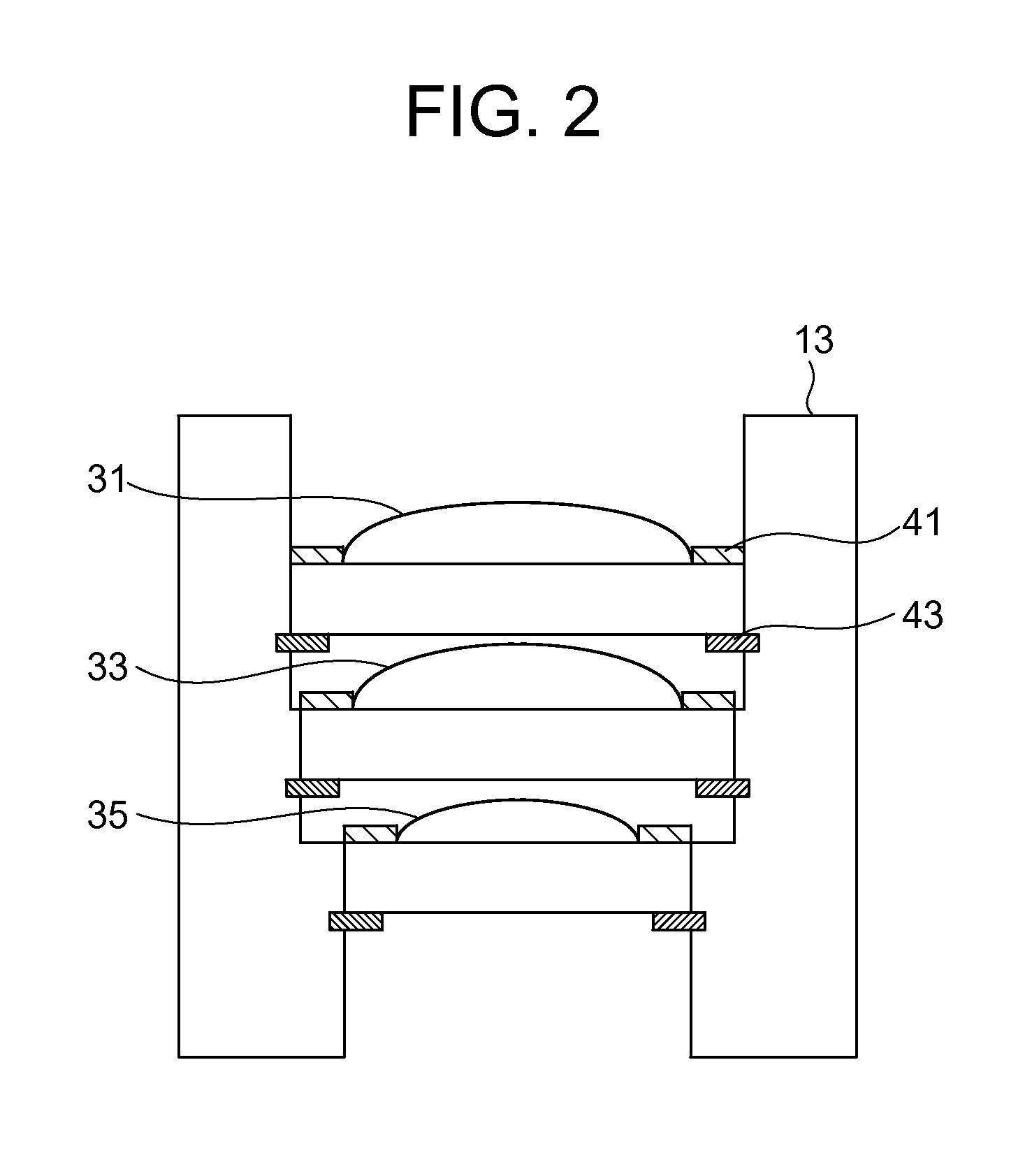Thin-film type light-absorbing film
a light-absorbing film, thin film technology, applied in the direction of light beam reproducing, instruments, transportation and packaging, etc., can solve the problems of deterioration of the light-absorbing power of light-absorbing films using metal layers, affecting the light-absorbing power of thin film layers, and generating ghosts. , to achieve the effect of preventing time-deterioration of metal layers, simple manufacturing process, and preventing reflection of ligh
- Summary
- Abstract
- Description
- Claims
- Application Information
AI Technical Summary
Benefits of technology
Problems solved by technology
Method used
Image
Examples
example 1
[0045]FIG. 6 shows a construction of a thin-film type light-absorbing film of Example 1. The thin-film type light-absorbing film of Example 1 is that in which a layer 103 made of triiron tetraoxide (Fe3O4) is formed on a substrate 101 and a layer made of silicon dioxide (SiO2) is formed thereon.
[0046]Table 2 shows thickness of each layer of the thin-film type light-absorbing film of Example 1.
TABLE 2Layer No.MaterialLayer thickness (nm)2SiO2731Fe3O410000Plastic substrate
Material of the plastic substrate is ZEONEX480R, ZEONEX340R, PC (brand names) or the like.
[0047]Table 3 shows conditions under which the thin-film type light-absorbing film of Example 1 is produced by a vacuum deposit method.
TABLE 3Substrate temperature (° C.)Temperature is not controlled.Ultimate vacuum (Pa)2.00E−03Fe3O4Deposition rate 4 Å / secDegree of vacuum of1.20E−03deposition (Pa)Gas to be fed (Pa)O2 (1.0E−5)(Very little gas is fed.)SiO2Deposition rate25 Å / secSiO2Degree of vacuum of2.00E−03deposition (Pa)Gas to ...
example 2
[0054]FIG. 9 shows a construction of a thin-film type light-absorbing film of Example 2. The thin-film type light-absorbing film of Example 2 is that in which a layer 203 made of titanium oxide (TixOy), a layer 205 made of silicon dioxide (SiO2), a layer 207 made of titanium oxide (TixOy), a layer 209 made of silicon dioxide (SiO2), a layer 211 made of titanium (Ti), a layer 213 of triiron tetraoxide (Fe3O4) and a layer 215 made of silicon dioxide (SiO2) are formed on a substrate 201 in the above-described order.
[0055]Table 4 shows thickness of each layer of the thin-film type light-absorbing film of Example 2.
TABLE 4Layer No.MaterialLayer thickness (nm)7SiO2766Fe3O41805Ti504SiO2503TixOy1002SiO2501TixOy1000Plastic substrate
Material of the plastic substrate is ZEONEX480R, ZEONEX340R, PC (brand names) or the like.
[0056]Table 5 shows conditions under which the thin-film type light-absorbing film of Example 2 is produced by a vacuum deposit method.
TABLE 5Substrate temperature (° C.)Temp...
PUM
| Property | Measurement | Unit |
|---|---|---|
| thickness | aaaaa | aaaaa |
| wavelength range | aaaaa | aaaaa |
| thick | aaaaa | aaaaa |
Abstract
Description
Claims
Application Information
 Login to View More
Login to View More - R&D
- Intellectual Property
- Life Sciences
- Materials
- Tech Scout
- Unparalleled Data Quality
- Higher Quality Content
- 60% Fewer Hallucinations
Browse by: Latest US Patents, China's latest patents, Technical Efficacy Thesaurus, Application Domain, Technology Topic, Popular Technical Reports.
© 2025 PatSnap. All rights reserved.Legal|Privacy policy|Modern Slavery Act Transparency Statement|Sitemap|About US| Contact US: help@patsnap.com



